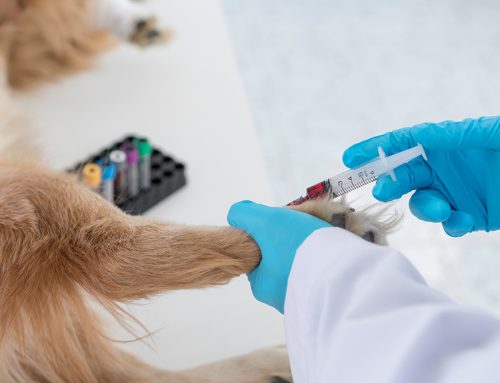You want nothing but the best for your furry friend, and you understand that nutrition is paramount to their health and well-being. However, navigating the world of pet food can be confusing and overwhelming, because of the plethora of brands, the many ingredients, and all the marketing terms on the packaging. How can you ensure you’re making the right choice for your pet? In this guide, our Boca Midtowne Animal Hospital team unravels the mystery behind pet food labels, highlights the red flags, and exposes how marketing terms can be misleading.
Understanding the basics of a pet food label
When you are trying to decipher a pet food label, you need to understand the basics to compare products. Look for the following key features:
- Product name — The product name serves as the first impression of what’s inside the package, and you must be aware that the name can be deceiving. For example, a product labeled as “Beef Dinner for Dogs” may contain as little as 25% beef, whereas a product labeled as “Beef Dog Food” must contain at least 95% beef, excluding water content. Look for labels that specify the percentage of the named ingredient to ensure you’re getting what you expect.
- Ingredient list — The ingredient list provides insight into the pet food composition. Ingredients are listed in descending order by weight, with the heaviest components listed first. When you scan the ingredient list, look at the top of the list for foods with named protein sources (e.g., “chicken,” “beef,” or “salmon”). Avoid products that use vague terminology for primary protein sources (e.g., “meat byproducts” or “poultry meal”), as they may include unspecified animal parts.
- Guaranteed analysis — This section outlines the minimum and maximum percentages of the food’s key nutrients, such as protein, fat, fiber, and moisture. While the guaranteed analysis can offer a general overview of the food’s nutrient content, you must remember that these values are based only on laboratory testing and may not accurately reflect the digestibility and bioavailability of nutrients.
- Nutritional adequacy statement — The nutritional adequacy statement indicates whether the food is formulated to meet the nutritional needs of a particular life stage, such as growth, maintenance, geriatric, or all life stages. Look for the Association of American Feed Control Officials (AAFCO) approval, which ensures the food meets specific nutritional standards. However, keep in mind that not all pet foods undergo feeding trials, so you should not rely solely on this statement, and other foods may be similarly nutritionally adequate.
By understanding these fundamental meanings on pet food labels, you can make more informed choices about the products you select for your pet. Always consider your pet’s unique dietary needs, preferences, and any underlying health conditions when choosing the most suitable food, and do not hesitate to ask for your veterinarian’s recommendation.
Red flags to watch for on pet food labels

While pet food labels may seem straightforward, pet owners must be wary of several red flags, including:
- Unidentified meat byproducts — Generic terms like “meat byproducts” or “animal byproducts” may encompass low-quality parts of animals. Look for specific ingredients like “chicken byproducts” instead.
- Artificial additives — Avoid foods containing artificial colors, flavors, and preservatives (i.e., BHA, BHT, and ethoxyquin), which may adversely affect your pet’s health over time.
- Misleading marketing terms — Marketing terms are designed to get pet owners to purchase a specific product, and many words that bring to mind high-quality nutrition are not regulated. For example, “natural” implies wholesome ingredients, but the term is not regulated and can be used liberally without meeting specific standards. “Holistic” and “premium” are also not legally defined in the pet food industry, so manufacturers can use them freely without adhering to any set criteria.
Choosing the optimal diet to keep your pet fit and healthy can be overwhelming when you look at all the options. We can help. Schedule a consultation with our Boca Midtowne Animal Hospital team to discuss proper diet and nutrition for your four-legged friend.








Leave A Comment